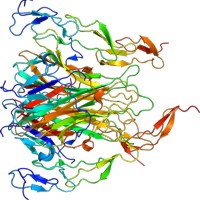Proliferative Effect of sTRAIL on Mouse Pancreatic Beta Cells
Keywords:
Cell Line, Tumor, Cell Proliferation, Congresses, Diabetes Mellitus, English Abstract, Insulin-Secreting Cells, Mice, Neoplasms, TNF-Related Apoptosis-Inducing Ligand
Abstract
Beta cell loss/impairment of function appears as a significant problem in both type 1 and type 2 diabetes. TRAIL (TNF-related apoptosis-inducing ligand) was recently correlated with both types of diabetes with a proposed protective effect. TRAIL was also shown to promote survival and proliferation in different cells such as vascular smooth muscle cells and human vascular endothelial cells. Recently, TRAIL was claimed to protect pancreatic beta cells against cytokine-related harm. We hypothesized a proliferative effect for TRAIL on beta cells, and used Min6 mouse pancreatic beta cell line to test our hypothesis. Min6 cells were treated with various doses of (0, 0.1, 1, 10, 100 ng/mL) soluble TRAIL molecule (sTRAIL) for 24, 48, and 72 hours. Survival and proliferation tests (WST-1 and Ki67, respectively) were performed. Phosphorylation levels of intracellular ERK, p38, and Akt molecules were studied by western blotting. We found that sTRAIL did not lead to apoptosis in Min6 cells, but increased survival and induced proliferation at 10 ng/mL dose. ERK and p38 phosphorylation was induced substantially, and Akt was phosphorylated at a lower degree in these cells. Our results suggest that sTRAIL increases cell survival and proliferation in Min6 mouse pancreatic beta cell line. These findings, while requiring further investigation, support a possible therapeutic role for TRAIL in diabetes.Acknowledgements This study was supported by grants from Tubitak, Ankara, Turkey (112S450), and Akdeniz University research fund 2012.03.0122.003
Image: Structure of the TNFSF10 protein. Based on PyMOL rendering of PDB 1d0g (Author: Emw, Wikimedia Commons)
Downloads
Download data is not yet available.

Published
2014-09-28
How to Cite
KahramanS., DiriceE., AltunbasH., & ŞanlioğluA. (2014). Proliferative Effect of sTRAIL on Mouse Pancreatic Beta Cells. JOP. Journal of the Pancreas, 15(5), 540. https://doi.org/10.6092/1590-8577/2790
Section
FRONTIERS IN MEDICAL SCIENCES (FIMS’2014): Diabetes, Cancer and Their Connection. Istanbul, Turkey. July 6-8, 2014
Copyright (c) 2014 Sevim Kahraman, Ercument Dirice, Hasan Ali Altunbas, Ahter Dilşad Şanlioğlu

This work is licensed under a Creative Commons Attribution 4.0 International License.
As a member of Publisher International Linking Association, PILA, iMedPub Group’s JOP follows the Creative Commons Attribution License and Scholars Open Access publishing policies. Journal of the Pancreas is the Council Contributor Member of Council of Science Editors (CSE) and following the CSE slogan Education, Ethics, and Evidence for Editors.